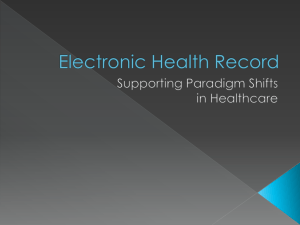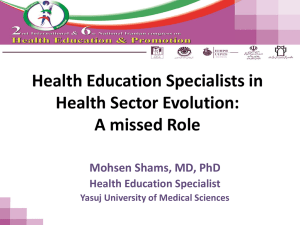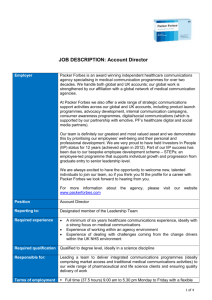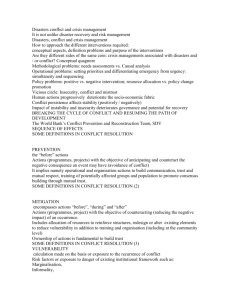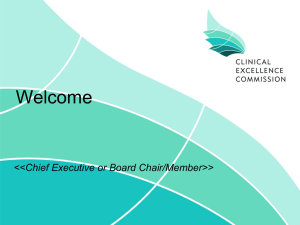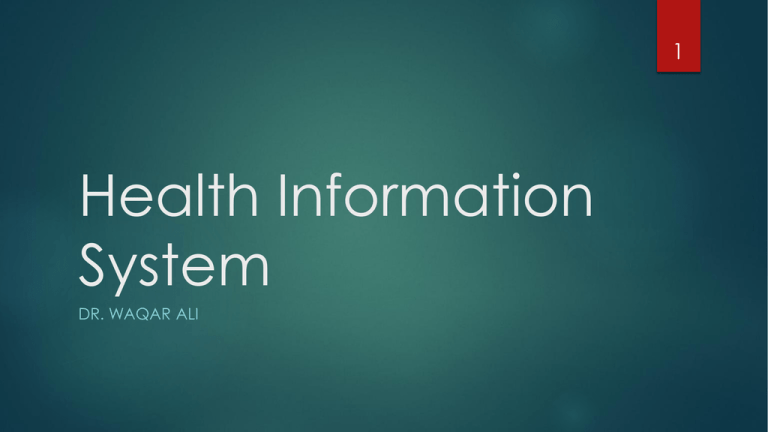
1
Health Information
System
DR. WAQAR ALI
Questions
1.
What is the overall goal of any health system?
2.
What would they like to see to confirm that the health status of the population is improving?
3.
Beside providing services, is health system concerned about issues of access and
coverage/utilization? If yes, how?
4.
Do you feel part of the health system?
5.
How do you know that health system is providing services and achieving its objectives?
6.
Does health information system help in assessing and monitoring health system
performance on a regular basis?
2
Basics
EVERYONE COUNTS
Better Information. Better Decisions. Better Health.
What do you think about it?
3
Continue..
Imagine a world where no death goes unrecorded, where a baby’s
first cry is heard around the globe.
Imagine a world where understanding one person’s illness helps
prevent the sickness of many.
This is a world with sound health information systems.
4
Continue..
Reliable and timely information is the foundation of public health.
Countries cannot afford to be without health information system,
because they will become poorer and poorer.
The world is getting more complex, and so are our public health
challenges.
5
Continue..
Health information systems play a vital role in improving the quality
and efficiency of healthcare by:
1.
Ensuring access to essential information
2.
Delivery of essential information.
Health Information Systems can be a powerful tool to make
healthcare delivery more effective and far more efficient.
6
Background
From the early 1960s through the 1970s, a new era of computing in
healthcare emerged.
A large group of hospitals in the western world agreed on the
necessity to advance a patient information management system.
These hospitals heavily invested money, time, and effort to move
toward computerization
7
8
Seeing the sudden surge of interest among the hospitals, some
commercial companies also joined in an effort to support patient
information systems.
During the late 1970s and early 1980s, computerization began to be
seen as a magic bullet for controlling and managing the large
medical and other administrative data processed on a daily basis.
9
Medical data range from demographics of patients to clinical and
health services data to epidemiological and health population
statistics.
Nowadays, it is hard to imagine healthcare without Information and
Communication Technology (ICT).
Why health information system?
Good management is a prerequisite for increasing the efficiency of
health services.
Improved health information system is clearly linked to good
management.
Information is crucial at all management levels of the health services
from periphery to the centre.
It is required by policymakers, managers, health care providers,
community health workers.
10
Definitions
System - Any collection of components that work together to
achieve a common objective.
Health System - All the activities whose primary purpose is to
promote, restore or maintain health.
Information - Meaningful collection of facts or data.
Information System - Systems that provide specific information
support to the decision-making process at each level of an
organization.
11
12
Health Information System (HIS) - A set of components and
procedures organized with the objective of generating information
which will improve health care management decisions at all levels
of the health system.
Or
An integrated effort to collect, process, report and use health
information and knowledge to influence policy-making, programme
action and research
13
The
ultimate objective of health information
system is not just “to gain information” but
“to improve action”
Health information cycle
14
Some of the terminologies related
to HIS
1.
Health/Medical Informatics and Telemetics
2.
Health information technology (HIT).
3.
Electronic medical record (EMR), Electronic health record (EHR),
Electronic patient record (EPR).
15
Classification of health information
systems
Information Systems
16
Characteristics
1. Patient centered
information systems
•
Manage comprehensive patient care information such as
medical records, appointment scheduling, theatre
management.
2. Clinical information
systems (CIS)
•
Perform specific tasks including collection of specific data
for patient care, research, management, planning and
maintenance of national data repositories
•
CIS are used for administrative support, patient data
collection, decision support, image analysis, monitoring,
reporting, assessment and research
17
Information Systems
3. Laboratory
information systems
Characteristics
• In high demand when a large number of tests generate
large data. Samples are analyzed fully automatically, and
the results are computer generated
• Support clinician to analyze trends to assess treatment
effects
4. Pharmacy information
systems
• Include functions such as keeping patients’ medication
records, checking prescriptions, and providing drug
prescriptions and administration to physicians and nurses.
18
Information Systems
5. Hospital information
systems
Characteristics
• Support healthcare activities at the operational, tactical
and strategic levels
• Encompass patient management, administration, facilities
management and medical applications
• Contain database systems, data communication facilities.
6. Telemedicine
• Facilitates exchange between primary care physicians
and specialists as well as patients from disperse locations
• Allows physicians to practice medicine at a distance
OBJECTIVES OF HIS
19
1. RAPIDLY DETECT AND RESPOND TO HEALTH PROBLEMS AND EPIDEMICS
2. MONITOR TRENDS IN HEALTH STATUS AND CONTINUALLY ADDRESS HEALTH-CARE
PRIORITIES
3. EVALUATE THE EFFECTIVENESS OF INTERVENTIONS AND SERVICE COVERAGE
4. ENSURE THAT RESOURCES ARE CORRECTLY TARGETED TO THE AREAS AND GROUPS
OF GREATEST NEED
5. EVALUATE THE QUALITY OF HEALTH INTERVENTIONS
1. RAPIDLY DETECT AND RESPOND TO HEALTH
PROBLEMS AND EPIDEMICS
To ensure that each health agency is rapidly alerted to a suspected
outbreak, it is necessary to set up an early warning and response
system (EWARS) from the onset of an emergency.
As soon as the situation permits this function should be integrated
within the broader objectives of an HIS.
This is one of the most immediate and specialized functions of the
HIS
20
2. MONITOR TRENDS IN HEALTH STATUS AND
CONTINUALLY ADDRESS HEALTH-CARE PRIORITIES
Monitoring health status allows health managers to observe trends in
the health profile of a population, detect the emergence of new
health problems and continually address public health priorities.
This is closely integrated with timely dissemination and sharing of
information with field partners, UN agencies, Ministries of Health
(MoH) and donors.
21
22
Mortality data are collected from health facilities, community health
programmes, and referral hospitals.
Morbidity data on injuries, health conditions and diseases are
collected from health facilities providing outpatient services,
inpatient wards, nutrition centers, mother-child health (MCH) clinics,
and community health workers.
Age, sex and cause-specific data allow planners to identify priority
areas and groups within the population and determine whether
programmes are equitable and resources effectively allocated.
3. EVALUATE THE EFFECTIVENESS OF INTERVENTIONS
AND SERVICE COVERAGE
If the utilization rate is lower than expected, it may indicate
inadequate access to health facilities (e.g. due to insecurity or poor
capacity of health services).
If the rate is higher, it may suggest over-utilisation due to a specific
public health problem (e.g. infectious disease outbreak) or underestimation of the target population.
23
24
Coverage can be affected by the acceptability of the programme,
location of delivery points, security for staff and those requiring
treatment, waiting times, service quality and the extent of home visiting.
E.g., prevalence of acute malnutrition and vaccination coverage.
The HIS also allows health planners to monitor the impact of specific
health interventions, by comparing health indicators in the population
before and after the intervention was started.
For example, monitoring a reduction in malaria incidence after
implementation of vector control programme, or increase in
vaccination coverage after a targeted community campaign.
4. ENSURE THAT RESOURCES ARE CORRECTLY TARGETED
TO THE AREAS AND GROUPS OF GREATEST NEED
Key stratifiers such as age, sex, refugee or host national status, and
geographical location are used to describe trends and grant
visibility to vulnerable groups.
Special efforts should be made to ensure balanced male and
female representation across all health service.
Special consideration is also given to the refugees because they are
important contributions to numerators such as consultation rates,
bed occupancy, and drugs and usage of other consumables.
25
26
Appropriate disaggregation is also important to prioritise high-risk
groups within specific health programmes.
For example, the under 18 age group is given particular attention
within Reproductive Health and HIV/AIDS programmes to emphasize
the unique reproductive and sexual health needs of young people.
5. EVALUATE THE QUALITY OF HEALTH INTERVENTIONS
Health programmes should continually monitor service quality
through measures of community participation, programme
acceptability (e.g. the rate of defaulting) and programme
coverage.
Rates of hospitalisation, outpatient service utilisation and admission
and discharge can also provide useful indicators of the
appropriateness of health seeking behaviour in a community
27
28
Default rates can be high when a programme is not accessible to
the population.
Accessibility may be affected by the distance of the treatment
point from the community, a lack of security and the quality of the
care provided.
Individual causes of readmission, defaulting and failure to recover
should be investigated on an ongoing basis.
29
Thank You

